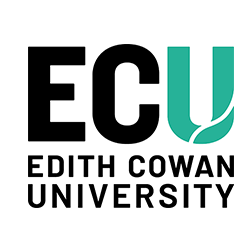Author Identifier (ORCID)
Shihao Yan: https://orcid.org/0000-0002-4586-1926
Abstract
In this paper, a novel simultaneous transmitting and reflecting reconfigurable intelligent surface (STAR-RIS) enhanced uplink non-orthogonal multiple access (NOMA) communication network is investigated. Specifically, we tackle the transmit rate maximization problem for the strong user, subject to the constraints on total power consumption and the successive interference cancellation order, while guaranteeing the minimum quality-of-service requirement for the weak user. To address such a non-convex optimal problem, we introduce a novel, efficient, and low-complexity scheme. Specifically, the power allocation and receive beamforming optimization solutions are acquired in closed forms, and the transmission and reflection coefficients are obtained in semi-closed forms with a one-dimensional bisection search. Then, theoretical analysis demonstrates our proposed scheme has a lower complexity compared to the schemes with alternating direction method of multipliers (ADMM) and semidefinite relaxation (SDR) strategies, and the complexity advantage of our proposed scheme over the SDR and ADMM aided schemes becomes prominent when the number of RIS elements increase. Simulation results show that the proposed STAR-RIS-NOMA scheme achieves a better performance than the conventional STAR-RIS-aided orthogonal multiple access (OMA) scheme and STAR-RIS aided NOMA scheme adopting random phase shifts. More specifically, the proposed STAR-RIS-NOMA scheme outperforms the STAR-RIS-OMA scheme in terms of the strong user's rate, especially when the quality-of-service (QoS) requirements for weak user is high, or there is a significant difference channel quality between the reflecting and transmitting links.
Document Type
Journal Article
Date of Publication
1-1-2025
Volume
74
Issue
5
Publication Title
IEEE Transactions on Vehicular Technology
Publisher
IEEE
School
Security Research Institute / School of Science
RAS ID
77897
Creative Commons License

This work is licensed under a Creative Commons Attribution-No Derivative Works 4.0 License.
First Page
7651
Last Page
7665


Comments
This is an an Author's Accepted Manuscript of an article published by IEEE. © 2025 IEEE. Personal use of this material is permitted. Permission from IEEE must be obtained for all other uses, in any current or future media, including reprinting/republishing this material for advertising or promotional purposes, creating new collective works, for resale or redistribution to servers or lists, or reuse of any copyrighted component of this work in other works.
Feng, Y., Xu, L., Li, Q., Yan, S., Wang, H., & Ng, D. W. K. (2025). Transmit rate enhancement for STAR-RIS-assisted uplink NOMA. IEEE Transactions on Vehicular Technology, 74(5), 7651-7665. https://doi.org/10.1109/TVT.2024.3524744